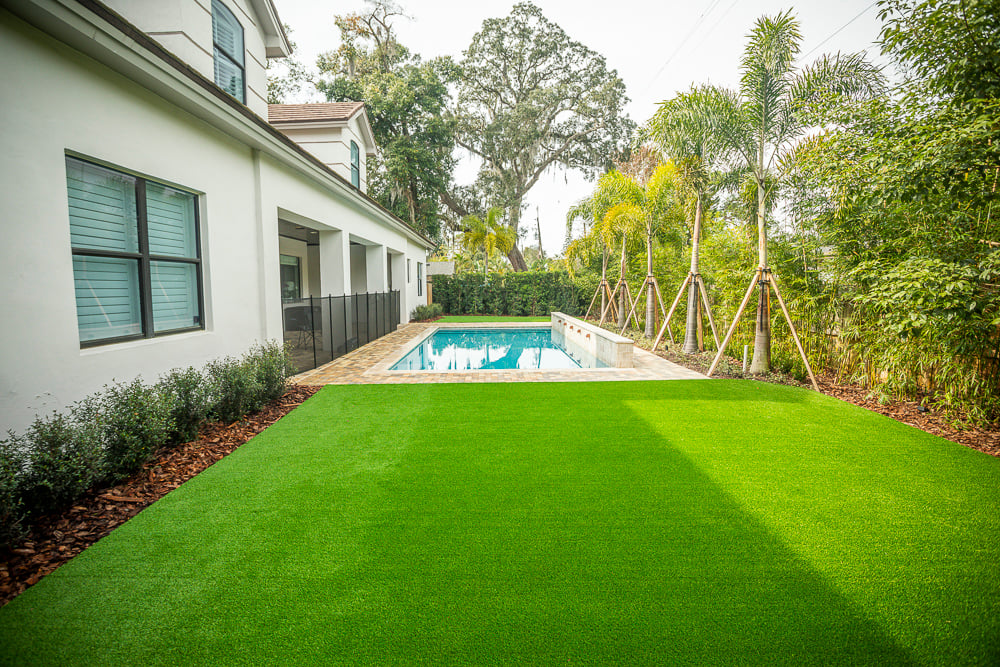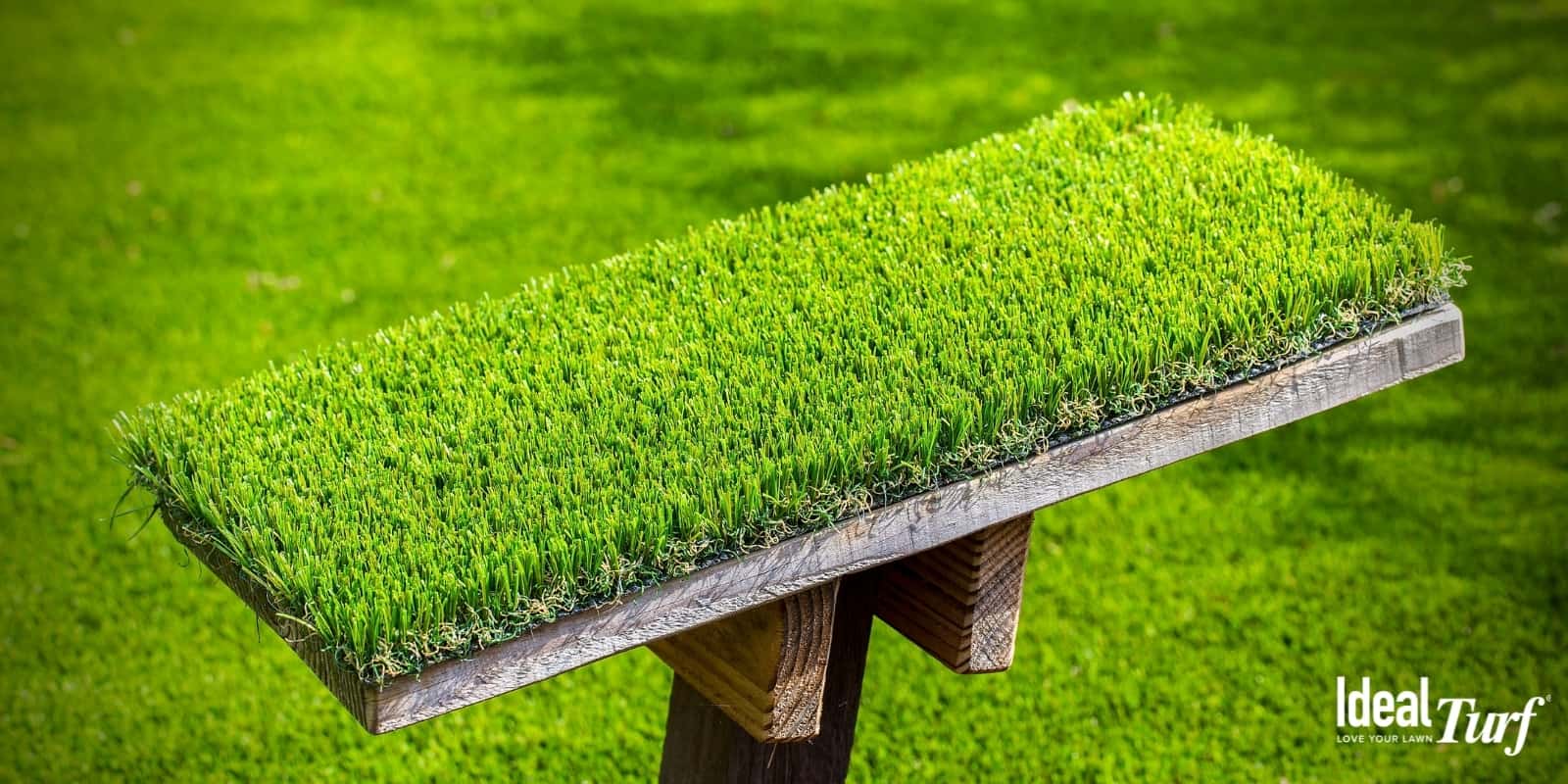See Why Homeowners Prefer Synthetic Grass for Lasting Landscaping Practices
As home owners progressively prioritize sustainability in landscaping, man-made grass has emerged as a compelling option to standard turf. What stays to be explored is the full scope of advantages that man-made lawn can use to home owners and the environment alike.
Water Preservation Conveniences
One of the most considerable benefits of synthetic turf is its duty in water conservation. Standard turf yards call for considerable amounts of water to maintain their lush appearance, often causing overuse of local water sources, particularly in deserts. In comparison, synthetic grass eliminates this need totally, as it does not require watering. This not just preserves water however additionally decreases the pressure on metropolitan water supply, especially during drought conditions.
Moreover, the installation of fabricated grass can add to a much more lasting landscape. Property owners can significantly decrease their water costs, enabling for reallocation of sources to various other environmental efforts or family usages. Furthermore, synthetic grass is created to endure different weather conditions without the need for extra watering, making it an optimal selection for areas facing water scarcity.
The environmental benefits expand beyond immediate water financial savings. By decreasing water usage, man-made grass helps to alleviate the influences of climate change, protecting vital communities that are intimidated by too much water removal. As sustainable landscape design practices acquire traction, synthetic grass becomes a liable selection for home owners looking for to create green outdoor spaces.
Decreased Upkeep Efforts
Man-made lawn dramatically decreases maintenance initiatives contrasted to typical lawn lawns. With artificial turf, house owners can remove the lengthy tasks related to all-natural landscape design, such as mowing, fertilizing, and weeding. This not just saves beneficial time yet likewise decreases physical labor, making grass care available for individuals of all ages.
Among one of the most significant benefits is the absence of routine mowing. Standard grass need frequent trimming to maintain a cosmetically pleasing height, whereas synthetic grass continues to be consistently lavish without the need for cutting. Additionally, home owners no more require to apply fertilizers or chemicals, which are frequently needed to maintain all-natural yard healthy. This change not just lightens the workload but likewise advertises a neater, extra uniform look year-round.
Additionally, synthetic grass is durable and resilient, calling for minimal maintenance beyond periodic brushing and rinsing to remove particles. This ease of maintenance allows homeowners to enjoy their outdoor areas without the constant fear of maintenance, offering even more time for recreation and household tasks. Inevitably, the minimized maintenance efforts associated with man-made lawn make it an enticing alternative for those looking for a low-maintenance, visually appealing landscape.

Ecological Impact Reduction
There is a growing acknowledgment of the environmental advantages connected with man-made grass, specifically in regards to water conservation and minimized chemical usage. Standard lawns need substantial quantities of water, specifically in drought-prone areas, leading to raised stress on regional water sources. In contrast, man-made grass removes the need for irrigation, substantially reducing water intake and promoting sustainability.
Furthermore, conventional lawn maintenance usually involves the application of herbicides, fertilizers, and chemicals, which can add to soil and water contamination. Artificial grass mitigates this ecological risk More about the author by calling for marginal upkeep and virtually eliminating the need for dangerous chemicals. This not just boosts dirt wellness yet likewise shields neighborhood ecosystems from hazardous drainage.
Furthermore, the production of all-natural lawn lawns commonly entails the usage of nonrenewable fuel sources for mowing and landscape design tools, further adding to greenhouse gas exhausts. By choosing artificial grass, home owners can dramatically lower their carbon footprint connected with grass care tasks.
Visual Allure and Flexibility
In enhancement to its environmental advantages, synthetic grass supplies considerable visual appeal and versatility for landscaping. Property owners can attain a rich, green appearance year-round, removing the seasonal changes commonly connected with all-natural turf. This consistent aesthetic not only boosts the aesthetic allure of a building yet also contributes to a properly maintained and refined look.
Furthermore, artificial turf is offered in a selection of designs, structures, additional reading and shades, permitting customization to suit specific choices and layout themes - Arizona turf. Whether used in domestic yards, commercial rooms, or leisure locations, it can perfectly integrate into varied landscaping layouts, from modern minimal to rich tropical setups
The flexibility of artificial grass prolongs past simple look; it can be set up in different places, consisting of roofs, outdoor patios, and also indoor rooms, producing opportunities for unique landscaping options. Furthermore, it appropriates for a series of activities, from youngsters's play areas to pet-friendly settings, offering performance without endangering style.
Eventually, the visual allure and convenience of artificial turf make it an attractive choice for property owners looking for sustainable landscape design services that do not compromise charm for ecological duty.

Long-Term Expense Cost Savings
One of the most engaging advantages of synthetic grass is its potential for long-term expense financial savings. Unlike natural lawn, which needs regular upkeep-- including mowing, watering, feeding, and insect control-- man-made turf significantly minimizes these continuous costs.
Additionally, synthetic grass has a lifespan of 15 to 25 years, relying on its high quality and usage. This longevity decreases replacement expenses, making it an extra cost-effective selection in the future. In addition, the initial financial investment in synthetic grass can often be redeemed via the cost savings accrued over time.
While the upfront expense may seem greater contrasted to sod installment, the advancing savings from decreased upkeep and water usage usually exceed these preliminary expenditures. Ultimately, the adoption of fabricated turf not only promotes published here a lasting landscape design remedy but also offers property owners an economically smart choice that aligns with long-term budgeting objectives.
Verdict
Fabricated turf emerges as an engaging choice for sustainable landscaping, using substantial benefits in water preservation, lowered upkeep initiatives, and lessened ecological influence. As communities progressively prioritize environmentally pleasant methods, the adoption of synthetic turf represents a dynamic action toward achieving lasting and durable landscapes.
In addition, fabricated lawn is developed to hold up against numerous climatic conditions without the need for supplemental watering, making it an optimal choice for areas facing water deficiency. (Phoenix turf companies)

Artificial grass arises as an engaging option for sustainable landscape design, using significant benefits in water preservation, decreased upkeep efforts, and reduced environmental effect.